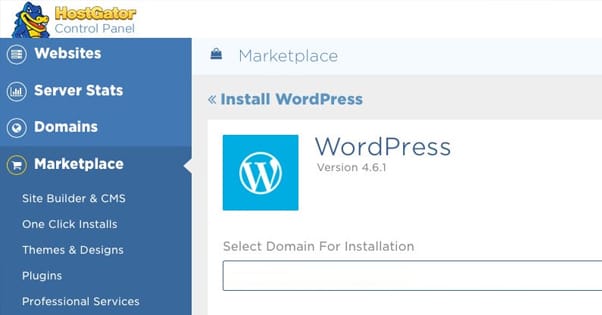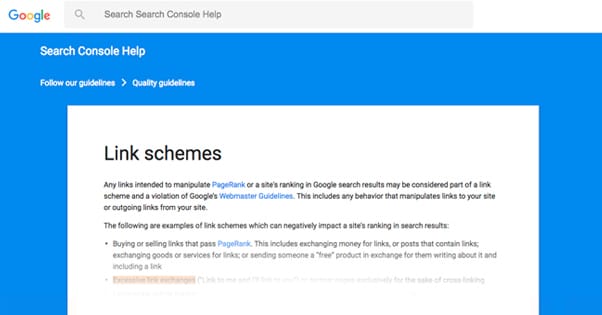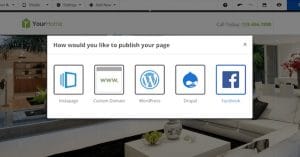Should You Install Your Blog on a Separate Domain?
Published by Drew Hendricks • Search Engine Optimization • Posted July 13, 2017 ContentPowered.com
ContentPowered.com
There are two different ways you could run a blog for your website. One of them is running it on your website, which is what most people do. In this instance, it can either be a subdomain or a subfolder. That is, www.blog.example.com or www.example.com/blog/.
The other option is to run it separately from your standard website. You might have your main homepage and your web store on www.example.com and you’d have your blog on www.exampleblog.com.
Should you ever use the second method? It’s very rare to see on the web today, which seems to indicate that it’s not a good idea. Of course, there are plenty of bad ideas performed by thousands of people every day, so which is it?
Is There a Reason to Separate Domains?
In short: no. There’s pretty much no reason you would want to put your blog on a different domain. In fact, there’s only a few reasons I can think of, in a hypothetical scenario.
This scenario would be where you’re using a free website builder for your main site, something like Wix or Squarespace, except one that’s limited to just an ecommerce platform with no ability to run a blog and no ability to integrate a blogging platform. This is rare; blogs are the default mode of website building today, and it’s usually the ecommerce platform that comes in as an extra that may or may not be supported.
In this rare instance, you might decide to run a blog on a separate domain. You might have example.com as your main site and example.wordpress.com as your blog. This can be legitimate, but it doesn’t bring you much benefit. In fact, the only way this can help your marketing is if you didn’t have a blog at all before; you can use it to start building some of the value you get from a blog normally.
Another potential reason would be for localization purposes. If you were running a site that sells to people in the USA, the UK, and Australia, you might create three versions of your shop site and one central blog. The central blog would have its own domain, and you could have other domains for localized sites, like a .com, .co.uk, and .au. However, it’s generally better to use other methods for localization, like subdomains or subfolders.
I’ve also seen some people be tempted to make a mobile version of their site on a separate domain, but it’s always better to use subdomains or, preferentially, responsive design.
The Non-Business Perspective
If you’re not running a business, you might want a separate blog. Likewise, if you’re running several businesses, you might want a separate blog. Neil Patel, for example, runs Quicksprout, Kissmetrics, and Crazy Egg, but he keeps his personal blog at neilpatel.com.
Of course, the thing to note here is that each of those businesses has their own blog as well.
If you want a personal blog, or a blog where you take a casual tone that isn’t appropriate for your business, you can do that on a separate blog. That blog can say that you’re affiliated with the business you own or work for, but it isn’t an official representation of that brand.
A separate blog on a separate domain can help you build personal authority and recognition, and it can give you more flexibility to blog about topics that wouldn’t normally be covered by a business blog. You can make it more personal, you can talk about your personal life, and you don’t necessarily have to care too much about SEO.
Advantages of an Integrated Blog
That said, there are far too many good reasons to integrate your blog with the same domain as your main storefront, homepage, or site.
A good blog helps customers get to know your brand. This works best when the blog is part of the site of your main brand. Otherwise there’s no way a casual user can easily identify whether or not the blog is official. People used to create fan blogs for companies they liked and labeled the “the OFFICIAL brand blog” when they were never actually official. There’s a lot of potential confusion you can avoid just by keeping the blog on your main domain.
A blog on the same domain is easier to access. Users won’t be confused as to why a link is taking them to a different domain, and they won’t be worried about being hijacked or misdirected. Plus, people will be more likely to guess the blog URL if they aren’t sure how to get to it, but really want to.
A blog on the same domain eases suspicion of phishing. One common way of hacking people is to get them to a site that looks like yours but secretly steals their information when they try to add it. Now, a blog isn’t normally going to be asking for credit card information, unless you have a membership-only system, but it can still harvest email addresses and contact information for future, more targeted attacks. Plus, if you have a blog on a separate domain, it teaches your users to trust other domains blindly, which eases suspicion from phishers. It just makes security that much harder.
A blog is a great way to earn backlinks, which benefit your whole domain. Blogs are veritable link magnets. Every piece of content is a chance for dozens or hundreds of sites to link to you. If the content is bad it might not get any links, but if the content is great, evergreen, and useful as a source, it might draw in links for years to come. I often find myself citing content form 2014 or earlier, both as facts and as a historical perspective; those sites are still getting links from years-old content.
Google ranks sites higher when they have more content. Larger sites with more content get more SEO value. In part, it comes just from having content. Every post is something Google indexes. Every post is an opportunity for your site to rank for a keyword. Every post is a new topic and new set of keywords to target. At the same time, all of the backlinks I mentioned above have an impact as well. More backlinks means more SEO value. More pages means more backlinks. It all builds upon itself, and the more content you have, the better off your site will be.
Google ranks sites higher when they have fresh content. Google has been using freshness as a ranking factor for quite some time. Moz has been testing and exploring how important it is as a ranking factor since all the way back in 2011. In 2016, they released this high quality article illustrating exactly how they have determined that freshness probably works.
Freshness is an interesting metric, because it’s only relevant for some types of queries. It’s a complex system to address. For example, during normal times, a query about an earthquake in L.A. probably doesn’t need fresh results. However, immediately after a major quake, fresh results should take precedence.
A blog allows you to become a thought leader. Blogs have value beyond just posting content. High quality content positions you as a thought leader. You become someone people turn to when they want an opinion on a trending topic. As time passes, your reputation grows, and more and more people come to trust you and the things you say. That can open up opportunities everywhere from guest posting to speaking gigs to new clients.
It’s easier to get people from blog to shop when they don’t have to leave the site. There’s really only one instance where you can get people to go from one site to another and still be interested in buying a product, and that’s when you’re referring people to a highly trusted site like Amazon. It’s why affiliate marketing has such low conversion rates and is so dependent on volume, compared to traditional marketing where you’re selling products directly.
You don’t have to maintain multiple domain names and websites. This one is purely from a mechanical and cost standpoint. One domain doesn’t cost much money, generally, though some high profile domains can fetch astonishing prices. More than one domain, however, by necessity costs more than just one. At the same time, you might need more than one set of hosting, and you’re maintaining more than one site. There are ways to work around all of this, but you’re still working around something rather than just operating with best practices.
Separate Blogs and Link Schemes
There’s one huge reason why you might want to avoid using a separate domain for your blog, and that’s because of Google’s rules on link schemes and exploitative link building.
Whenever you link from one website to another, that link passes PageRank, which is the link juice that helps Google determine the search ranking of a site. A site with a lot of links will have a lot of PageRank flowing in from a wide variety of sources, which makes it rank higher and be more resilient to losing a few links.
One of the common ways to game the search results, years ago, was to use link schemes with networks of blogs. All of these blogs would act as if they were stand-alone sites on their own domains, and they would link to your “money site”, which is the site you actually wanted to use to make money.
Now, pop quiz; what’s the difference between that setup and the concept of running a shop site and a blog on a different domain?
There are two major differences that may help, but also may not. One is that you’re maintaining consistent branding and association between them. One hallmark of link schemes is hiding your association with the blogs. The idea is that if Google doesn’t know you set them up, they look more like legitimate backlinks, and thus pass value. If Google DOES know you set them up, they look spammy, and Google doesn’t let them boost you at all.
However, with consistent branding, Google might determine that the two domains are part of the same site and will allow value to pass between them. Or they might not. You have no way of knowing which path Google will take; only that it’s more likely than not that you’re going to not have issues passing value from your blog to your site.
The other difference is that you only have one blog, rather than a network of them. This is, again, another sign that your blog and your main site are connected rather than separate entities. However, what you end up with is still two different domains, and Google considers different sites to be sites with different domains.
The fact is, if you’re running a blog on a separate domain, it’s not going to count as part of your main site. Rather, it’s a lot more likely to be considered a separate site, even if it’s owned by the same person and has the same branding. Links might or might not pass value, but if they don’t, you’re in for a hard time while you try to grow two sites with half the value of each, when you could just be growing one.
So at the end of the day, when all is said and done, there are so many benefits to having a blog on your primary domain that to run it on a separate domain is just a waste. You waste time and effort essentially growing two sites instead of one, with half the power of each of them. Just keep them on the same domain and don’t try to reinvent the wheel.











Kenny
says:Very helpful… I’ve been having this dilema lately for building a blog for my ecommerce site… you showed good reasons to keep it in the same domain. Thanks!
Nora Park
says:This was super helpful article for me. Do you have any tips on how to best move a blog that has existed on a separate domain for 4 years to a business’ main website most effectively for SEO benefits.
James Parsons
says:Hi Nora! As long as you properly redirect the old links to the new ones, you shouldn’t have any issues at all. Redirecting 100% of your old links to the new location on your old site is crucial. Make sure you keep the old site active as well so that those redirects stay in place. If you let the old domain expire / die off, those redirects will stop working and you will see a drop in traffic, rankings, and website authority.